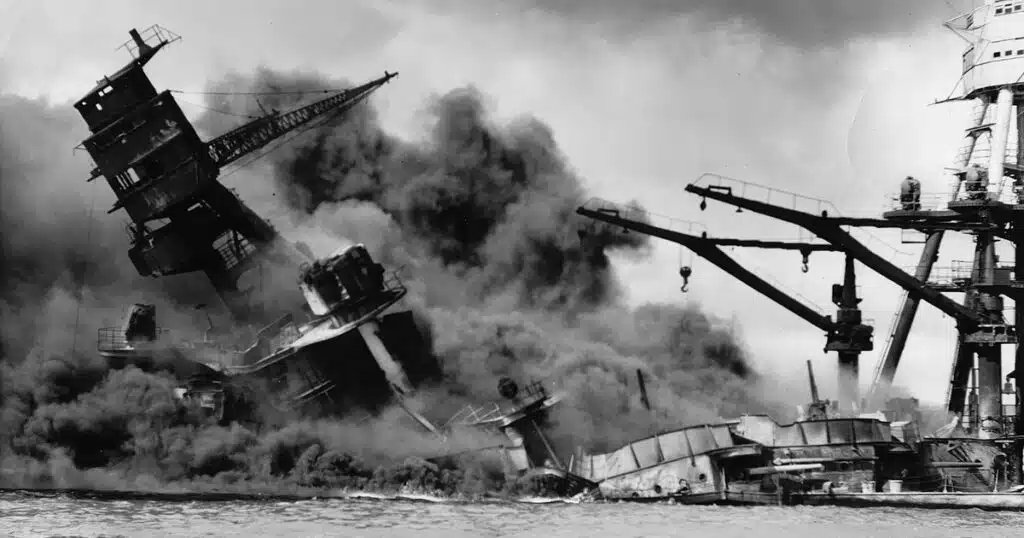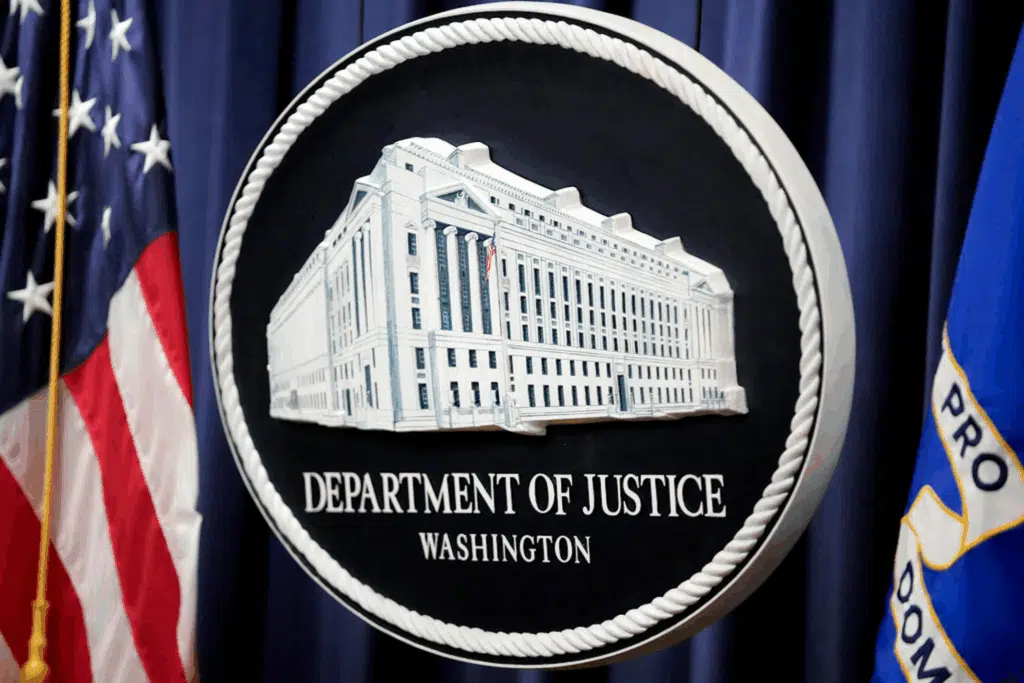
Slouching Towards World War III
The United States, led by President Joe Biden (who a few weeks ago recalled recently speaking to two foreign leaders who had been dead for many years and confusing the names of the current Egyptian and Mexican presidents), Secretary of State Antony Blinken, National Security Adviser Jake Sullivan, and Defense Secretary Lloyd Austin (who recently disappeared for a significant medical procedure without telling anyone), is once again engaged in an ideological crusade on the side of “democracy” in a global struggle with “autocracy.”
“Democracy,” we are told, is under assault by a new “axis” of autocratic powers that seek to replace the “liberal world order’ (sometimes called the “rules-based international order”) with an autocratic order. The champions of this crusade tell us that China, Russia, and Iran are coordinating their foreign policies to attack U.S. interests in Europe, Asia, and the Middle East, though they supply little, if any, evidence of such coordination. Our 21st century crusaders want to pour more American resources into proxy wars we are helping to wage in Ukraine and the Middle East, while simultaneously aiding Taiwan and building-up our military forces in the western Pacific, even as we suffer at home from skyrocketing deficits and an invasion on our southern border. We are slouching towards a global conflict that has the potential to dwarf in destruction the two world wars of the twentieth century.
Biden, Blinken and Sullivan are the policy architects of the current crusade, but they are supported by the neoconservative intelligentsia, much of the foreign policy establishment, the mainstream media, and what President Eisenhower called the “military-industrial complex.” The current crusade is fueled by neo-Wilsonianism on steroids. President Woodrow Wilson said we fought the First World War to make the world safe for democracy. Wilson’s disciple Franklin Roosevelt told Americans that we waged World War II to establish the principles of the Atlantic Charter throughout the world. FDR’s successor Harry Truman pledged to “support free peoples who are resisting attempted subjugation by armed minorities or by outside pressures.” President John F. Kennedy pledged to “pay any price, bear any burden, meet any hardship, support any friend, oppose any foe to assure the survival and the success of liberty.” George W. Bush waged a “Global War on Terror” to promote democracy throughout the world. These crusading presidents are the forerunners of the Biden administration’s crusade against “autocracy.”
All of the previous crusades failed. Wilson’s foreign policy crusade set the stage for the rise of totalitarianism and the Second World War. FDR’s crusade ended in a divided Europe and a costly Cold War. Truman’s crusade crashed on the shores of the Korean peninsula, even as his policies failed to prevent Mao’s communists from seizing power in China. Kennedy’s crusade led to a series of crises that brought the world to the brink of nuclear war and began the path to the debacle of Vietnam. Bush’s crusade spilled American blood and spent American treasure in the endless wars in Afghanistan and Iraq. Biden’s crusade threatens to get the United States deeply involved in three wars against at least two, and possibly three, nuclear-armed powers. How did we get here?
We got here because our leaders and policymakers during the last thirty-some years replaced foreign policy realism based on what Robert Kaplan calls a sense of the tragic with ideological “democratism,” which has been described as “a mirror image of the Christian doctrine of Original Sin.” After the Cold War came to an end, we were told by leading democratists like Francis Fukuyama that we were at the “end of history,” when “the end point of mankind’s ideological evolution and the universalisation of western liberal democracy as the final form of human government” had arrived.
The first manifestation of the democratist ideology was the expansion of the North Atlantic Treaty Organization (NATO) eastward towards the borders of Russia. Every U.S. president from Clinton to Biden, despite repeated protests from Russia’s leaders and despite warnings uttered by foreign policy realists like George Kennan, Richard Pipes, Jack Matlock, Jr., Owen Harries, Arthur Hartman, Robert Bowie, Fred Ikle, Edward Luttwak, Paul Nitze, Sam Nunn, and others, pushed the North Atlantic Alliance closer and closer to Russia’s western border. The American nuclear umbrella now extended to all former Soviet satellite nations in Europe plus Montenegro, Croatia, and North Macedonia. And the George W. Bush administration publicly extended invitations to join NATO to Ukraine and Georgia. Russia’s reaction to an adversarial military alliance expanding closer to its borders, apparently, was considered irrelevant or unimportant. Democracy was on the move. There was among American policymakers no sense of the tragic.
Then, when Islamic militants repeatedly attacked U.S. and Western interests in the Middle East, culminating in the terrorist attacks of September 11, 2001, America’s response was not only to strike back at those who attacked us, but also to attempt to reshape another civilization in our image by spreading liberal values and democratic institutions worldwide. President George W. Bush made democracy promotion a vital U.S. interest and expended the blood of our soldiers, sailors, Marines, and airmen in that ultimately futile effort–an effort, by the way, that also increased Iranian, Russian, and Chinese influence in the region.
Although Ukraine did not join NATO, the United States, as Ted Galen Carpenter pointed out, began to treat Ukraine as a NATO ally ever since the U.S.-supported Maidan revolution resulted in the overthrow of the elected pro-Russian government in Kyiv in 2014. Russia’s reaction was predictable–it seized Crimea in 2014, and eight years later invaded Ukraine, starting a devastating war that our crusaders now label as a crucial struggle between democracy and autocracy, and a key battle in our global confrontation with the “axis of autocracy.” If only our crusaders had remembered George Kennan’s remark that Russia views Ukraine the way the United States views Pennsylvania, perhaps all of this could have been avoided.
Meanwhile, Hamas’ brutal October 7th attack against Israel and subsequent attacks on U.S. forces in the region has led not only to U.S. support for Israel’s military response in Gaza, but also to calls for the U.S. to directly strike targets inside Iran. Our Middle East crusaders are urging the escalation of a proxy war into a direct military confrontation between the U.S. and Iran as part of a larger effort against the so-called “axis of autocracy” consisting of Iran, Russia, and China (some add North Korea). But as Daniel DePetris has noted, the temporary alignment of Iran, Russia, and China is less a strategic alliance than an opportunity to use other powers to promote their own interests–the enemy of my enemy is my friend.
There is much more at stake for the United States in the western Pacific. The wars in the Middle East and Ukraine are distractions from the geopolitical center of gravity in the Asia-Pacific. Yet, the U.S. Senate just passed a foreign aid bill that spends $60 billion on Ukraine, $14 billion on Israel, $9 billion for Palestinians in Gaza, and a miserly $5 billion for the Indo-Pacific. The notion that the conflicts in Ukraine, the Middle East, and East Asia are interlocked by an existential struggle between democracy and autocracy dangerously substitutes ideology for geopolitical realism. What is needed is not another crusade but a realistic strategy that prioritizes U.S. interests, avoids needless escalation of regional conflicts, husbands resources for our most vital interests, and, to paraphrase Walter Lippmann, brings into balance our commitments and resources.
Francis P. Sempa writes on foreign policy and geopolitics. His Best Defense columns appear at the beginning of each month.
This article was originally published by RealClearDefense and made available via RealClearWire.



